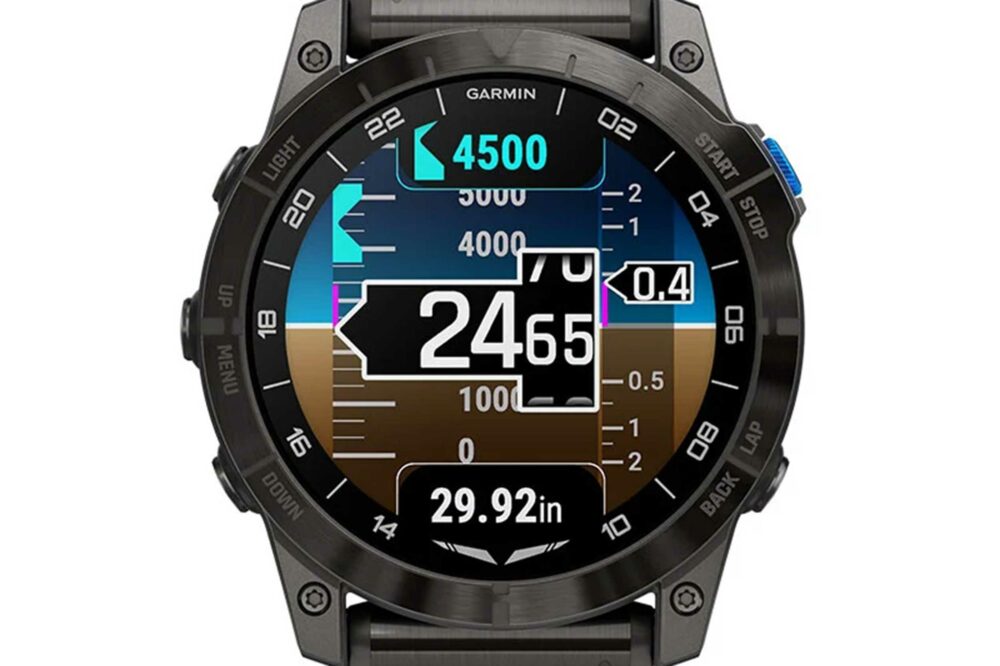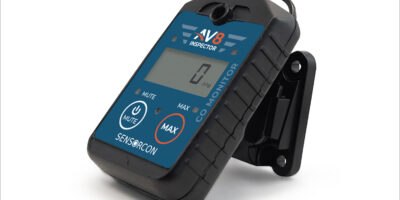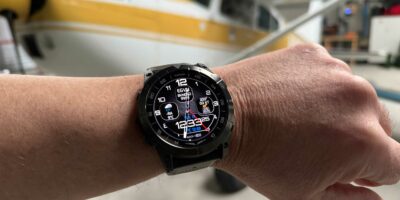Sadly, even though we’re pilots we’re also human. Even though some deny this fact, it means we’re also fallible, and can get distracted and miss things. This watch can lend a subtle hand (wrist?). You can set various aviation specific alerts for things like altitude, waypoints, weather etc. I’m not sure that I’d go to the trouble of setting it up to help me avoid every single bit of vertical airspace, but I might were I operating in an area with a higher shelf (say around the London TMA). And, I would definitely set an altitude alert if I were using oxygen (it’s useful to get a reminder and check that everything is working as it should before you get too high). You can also set timer alerts for things like changing fuel tanks, or FREDA checks etc.
The watch is part of Garmin’s connected ‘Plane Sync’ system. You can show routes, you can use it to navigate (sort of), you can use it to look at the weather (and set it to alert when there’s, say, a new METAR). However, most of these functions are better done via a phone or tablet than a watch. That said, pressing the start and down button at the same time will bring up a nice bright colour map with rainfall overlaid, so useful for a quick glance if your bigger screens are busy doing something else.
Of course, you have all of the normal sports functions, so if that’s your thing then you’ll have more than enough data, plus the ability to connect to even more external sensors. If you have a compatible bank (not Lloyds nor American Express) you can set up Garmin Pay, you can run Spotify and probably do things that I never knew people did. Allow me to point you at the online manual which’ll show you exactly how to set up the watch for things like hunting, golfing and something called ‘Jumpmaster’ – whatever that is.
For those who love detail, the D2 Mach 1 Pro has a sapphire crystal, a titanium bezel, measures 51 x 51 x 15 mm (it is chunky), weighs 126g (with the metal strap), has a water rating of 10 ATM (which means you’ll be good down to about 100m (so OK, even in Mike Patey’s new swimming pool), has an Amoled touchscreen display and a battery life that is measured in many, many days (I only bother to plug it in once every 10 days or so).
To summarise, if you are after a watch, if you like the way this one looks and if £1,450 is within your budget, go for it, you won’t be disappointed.










